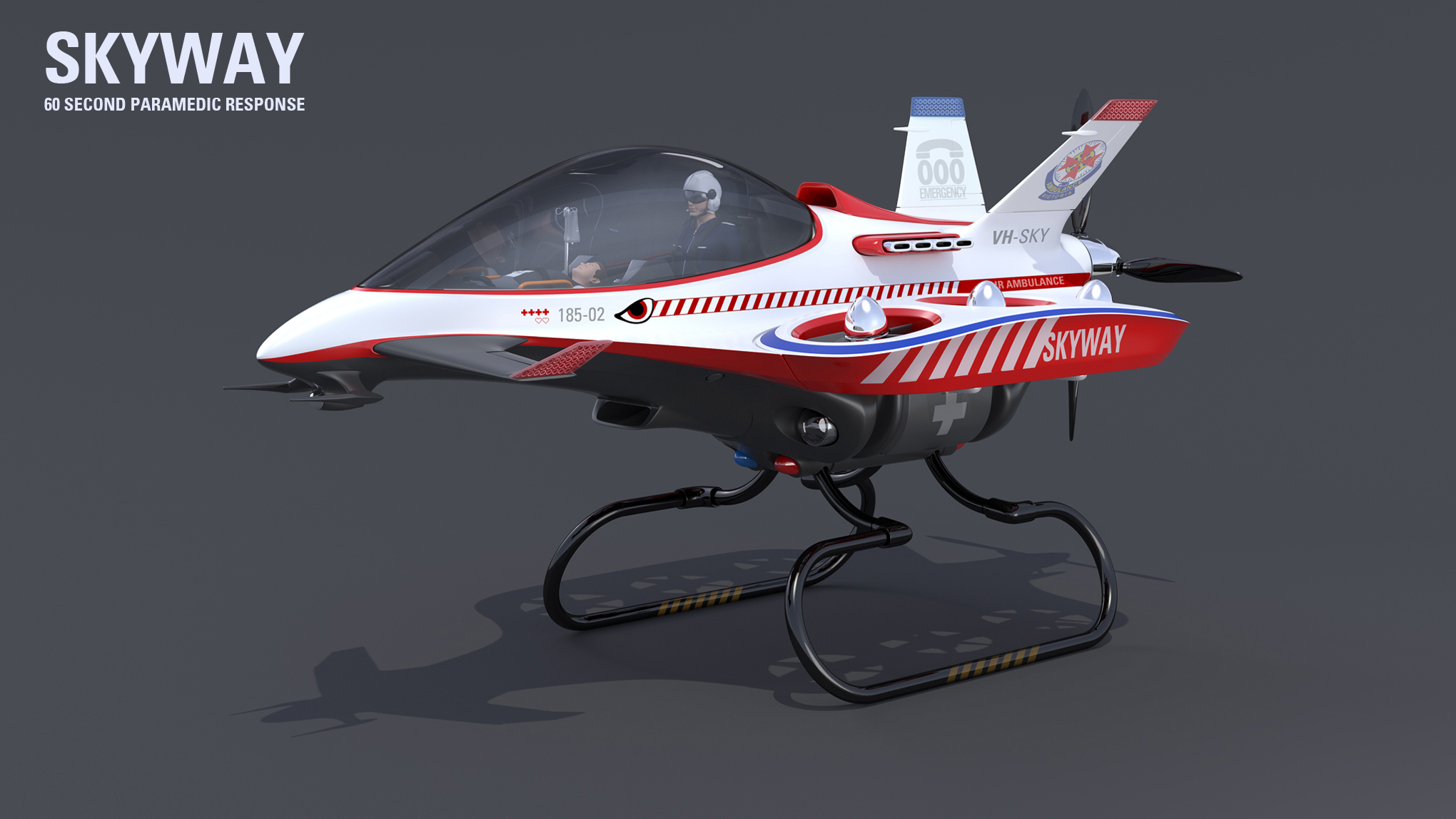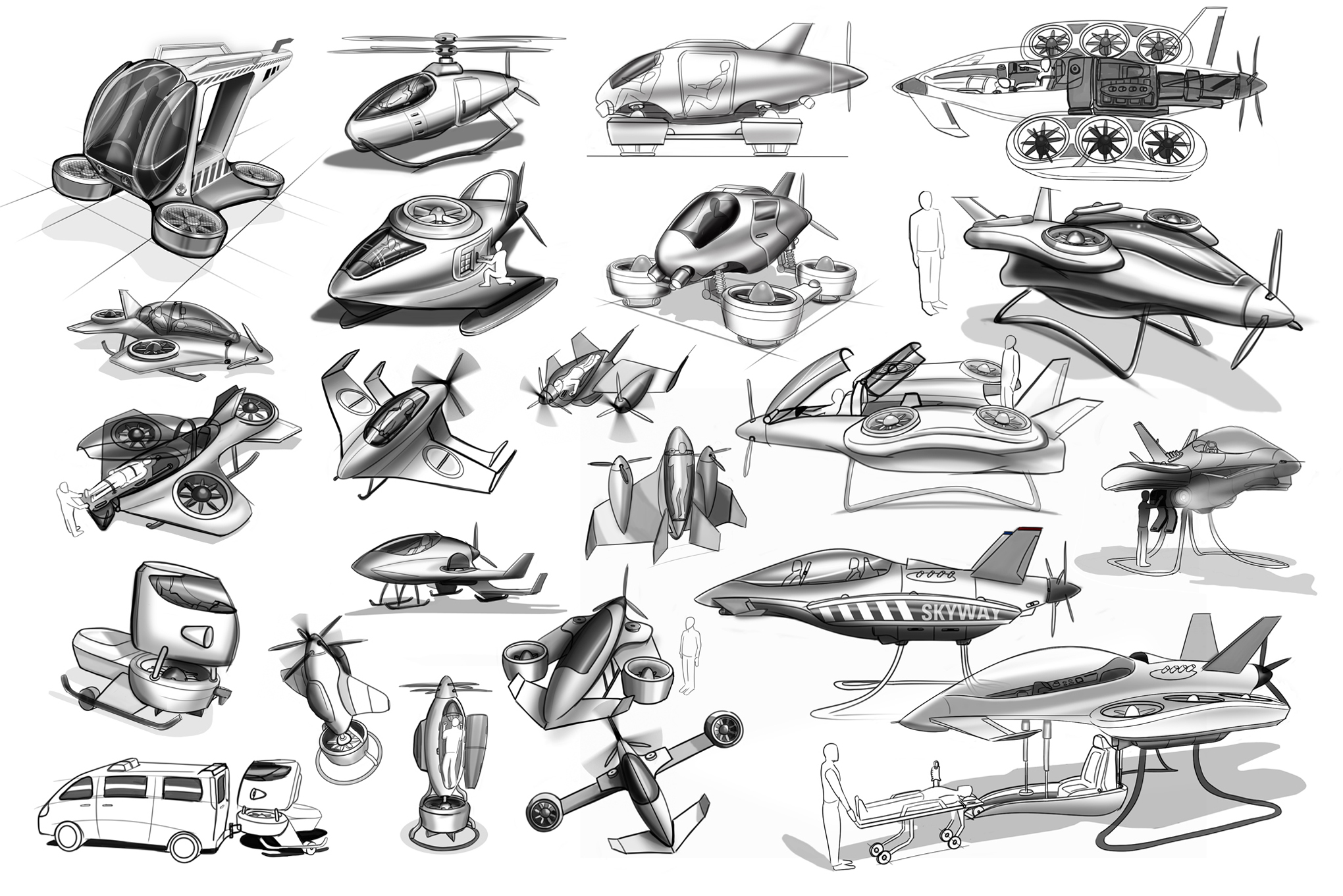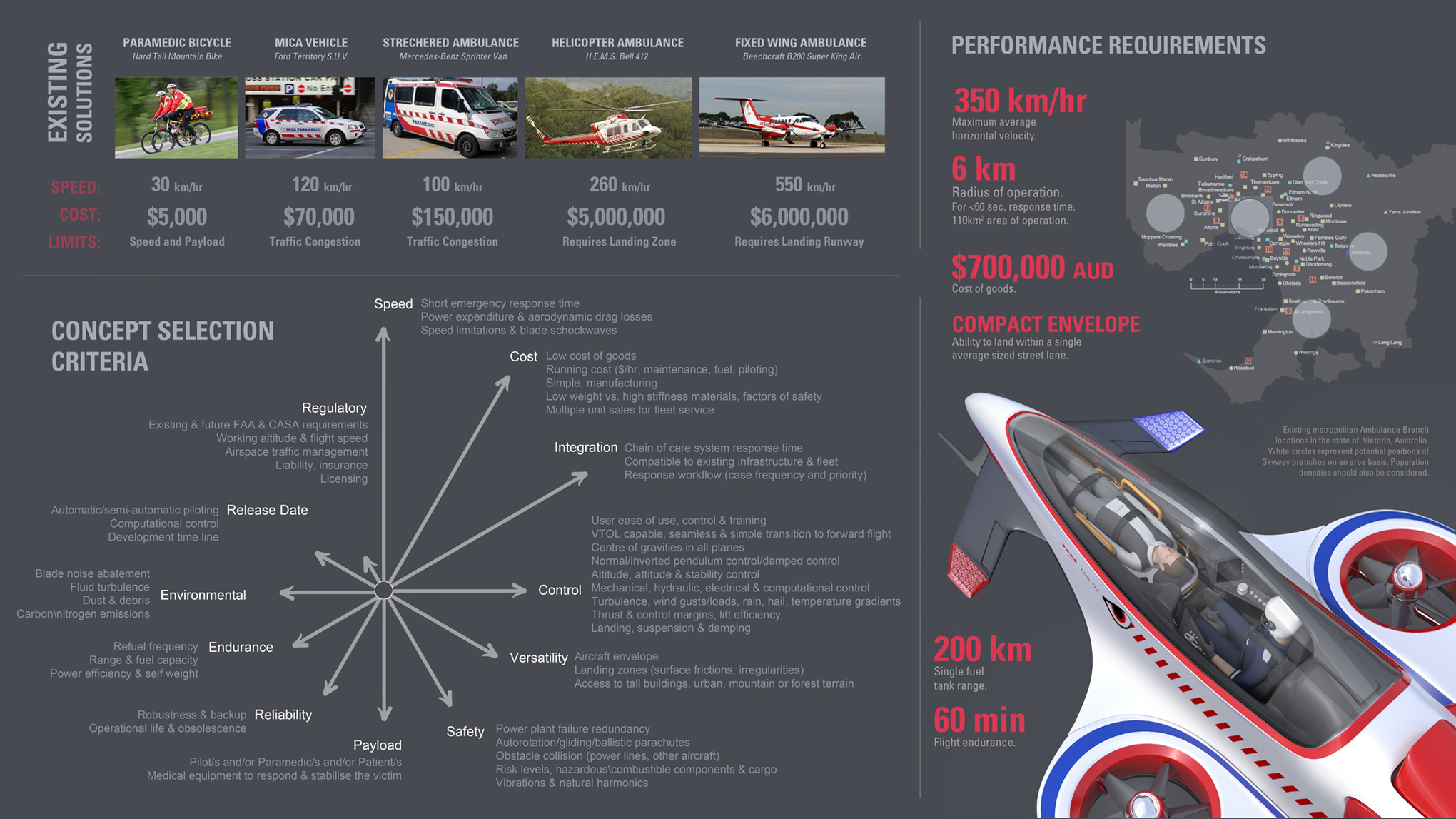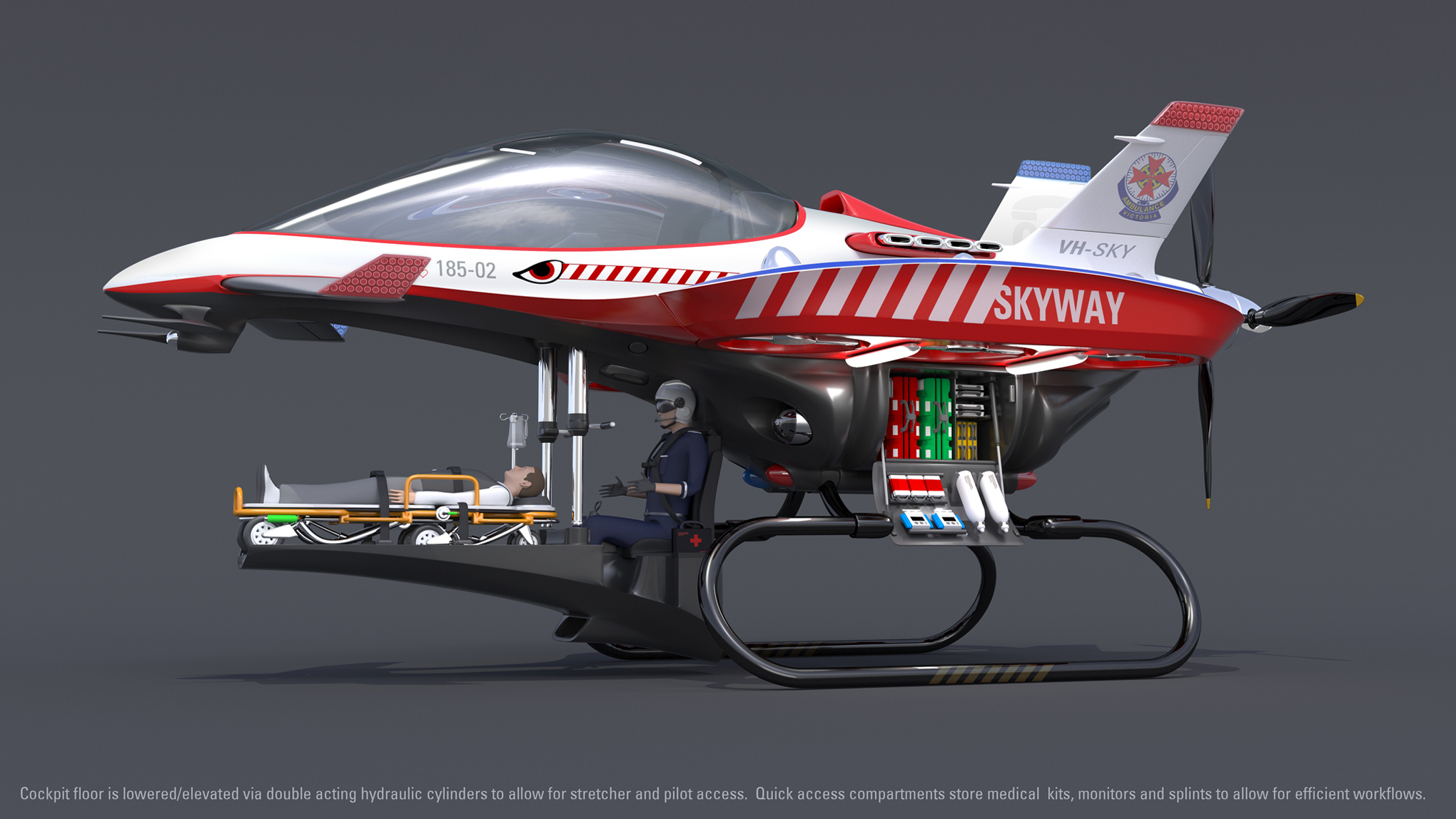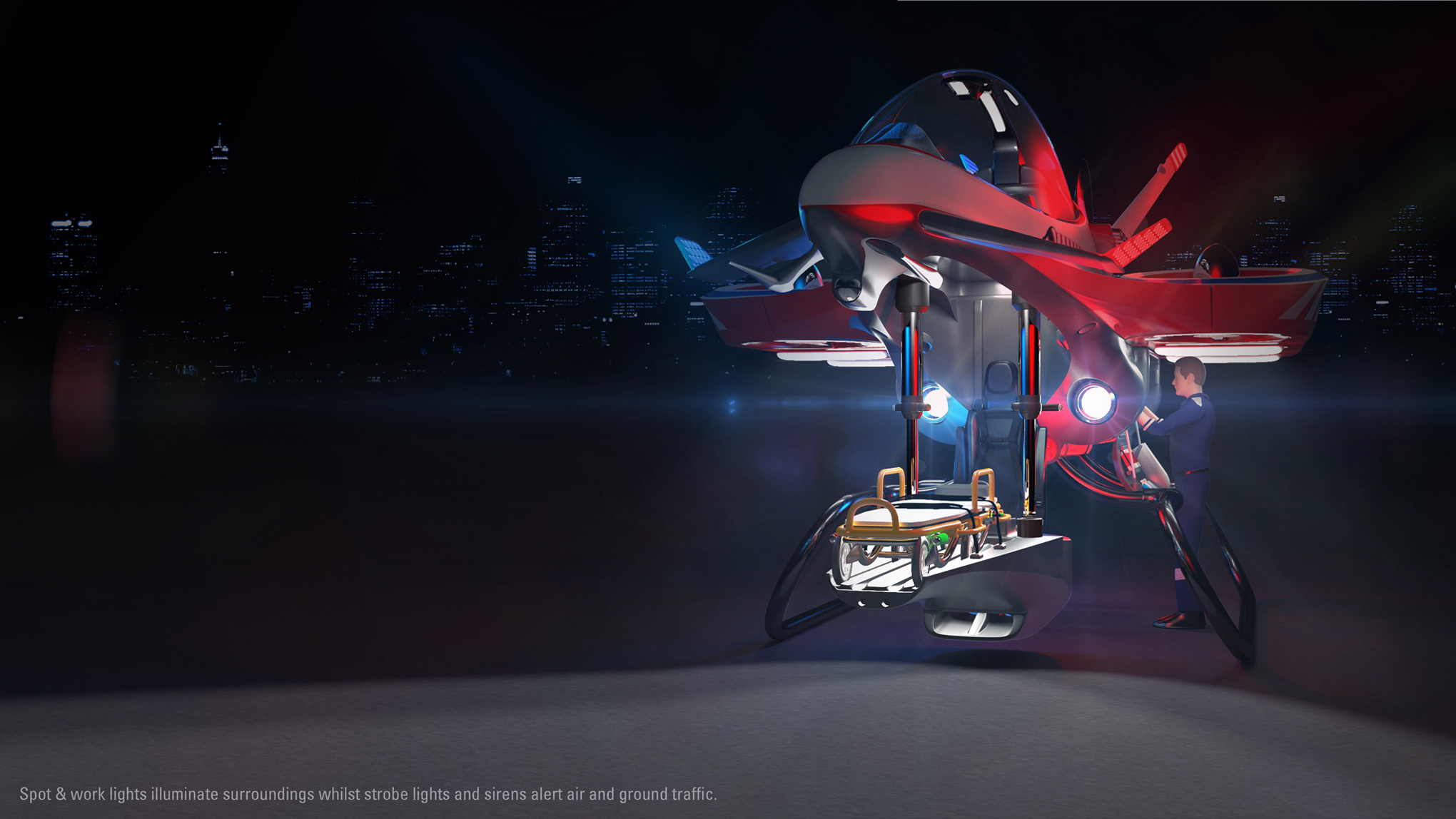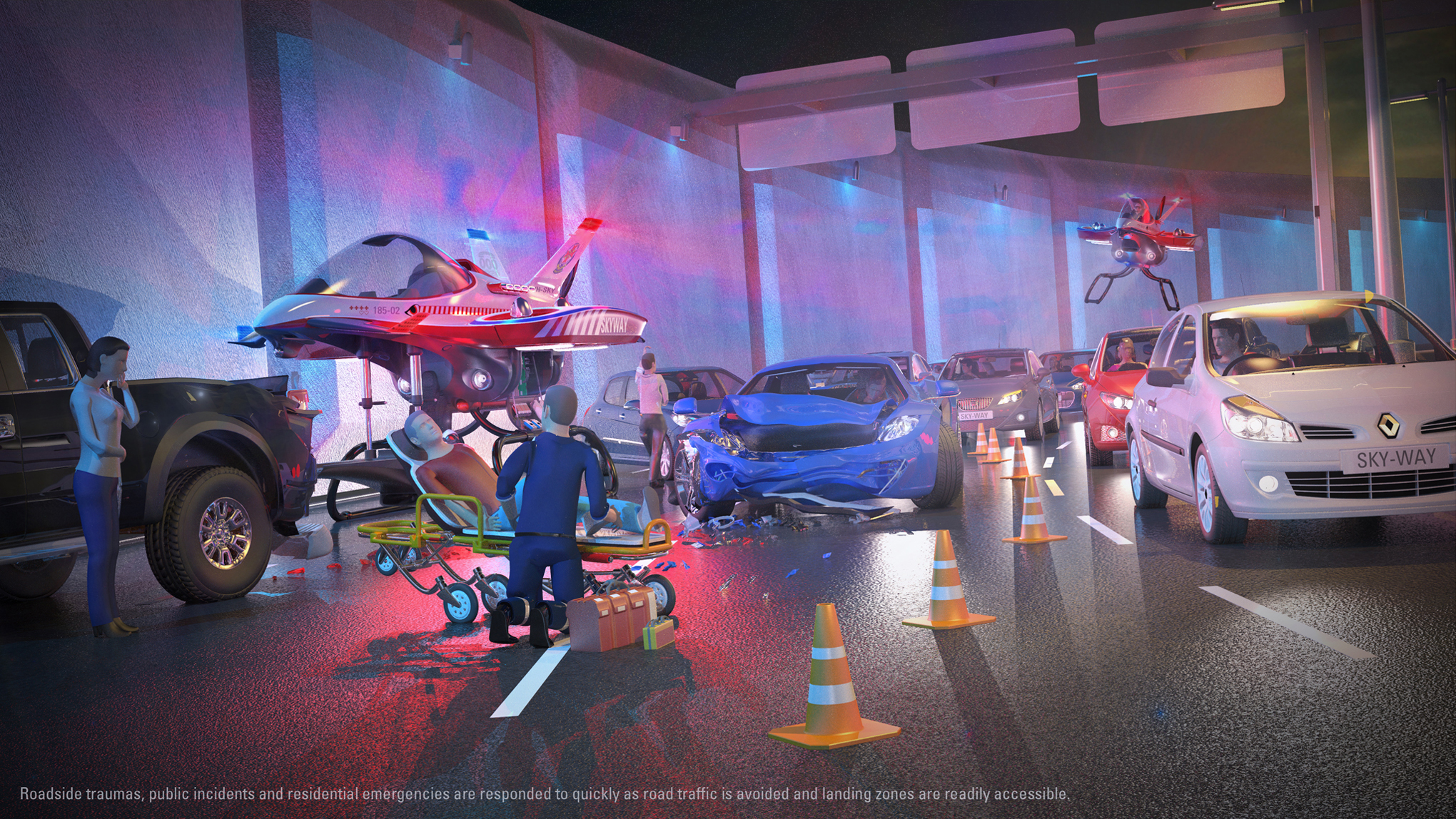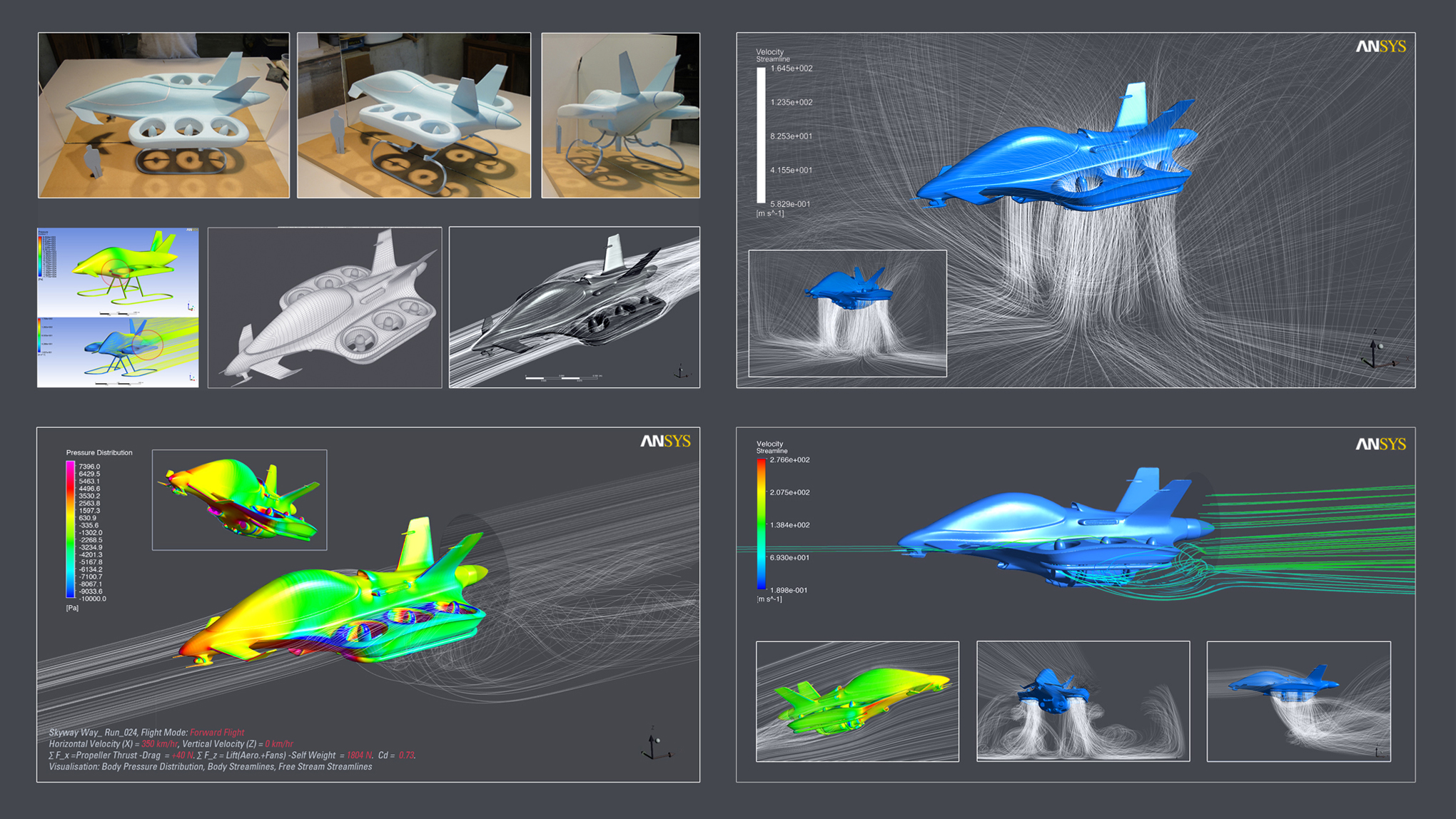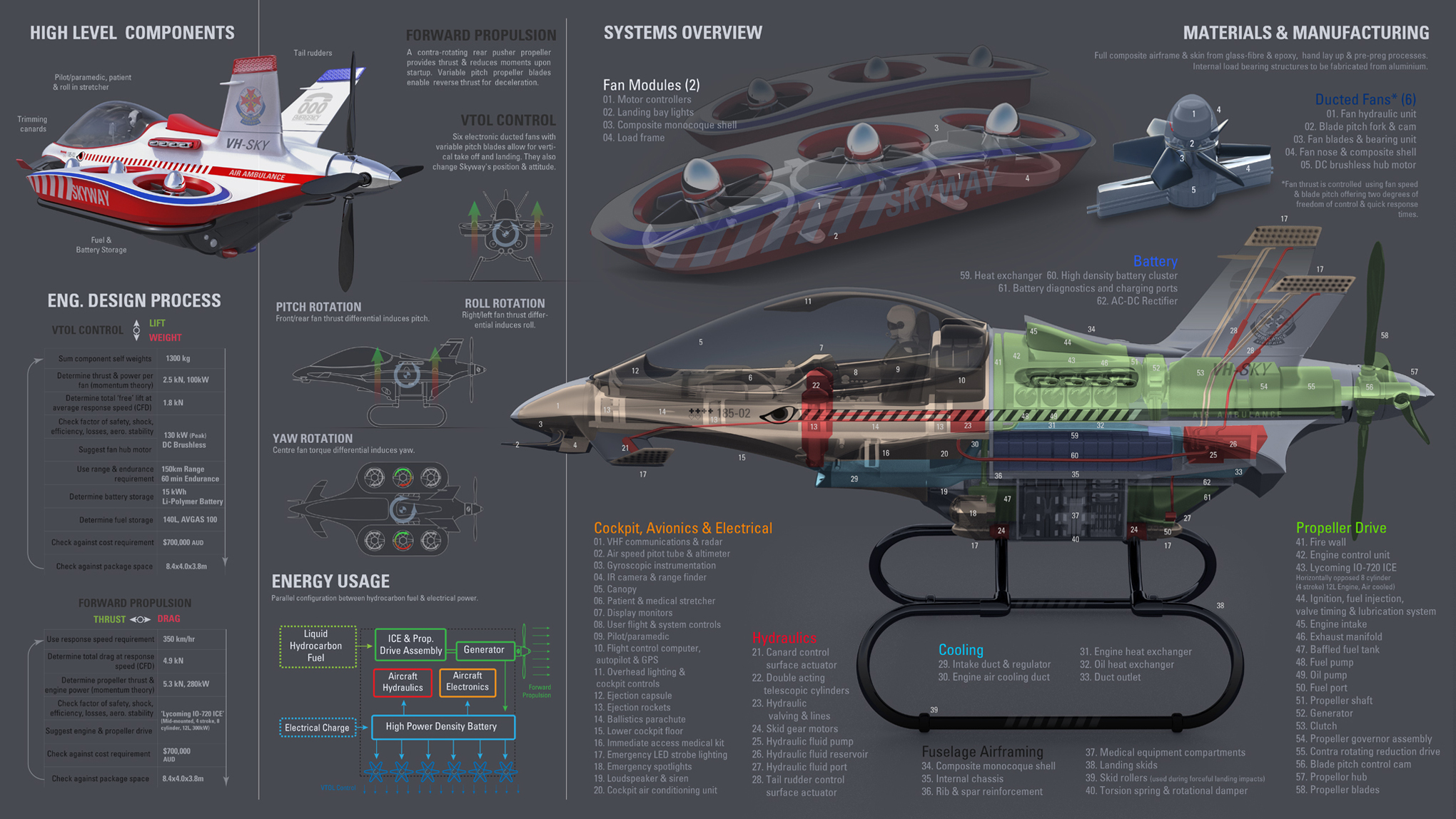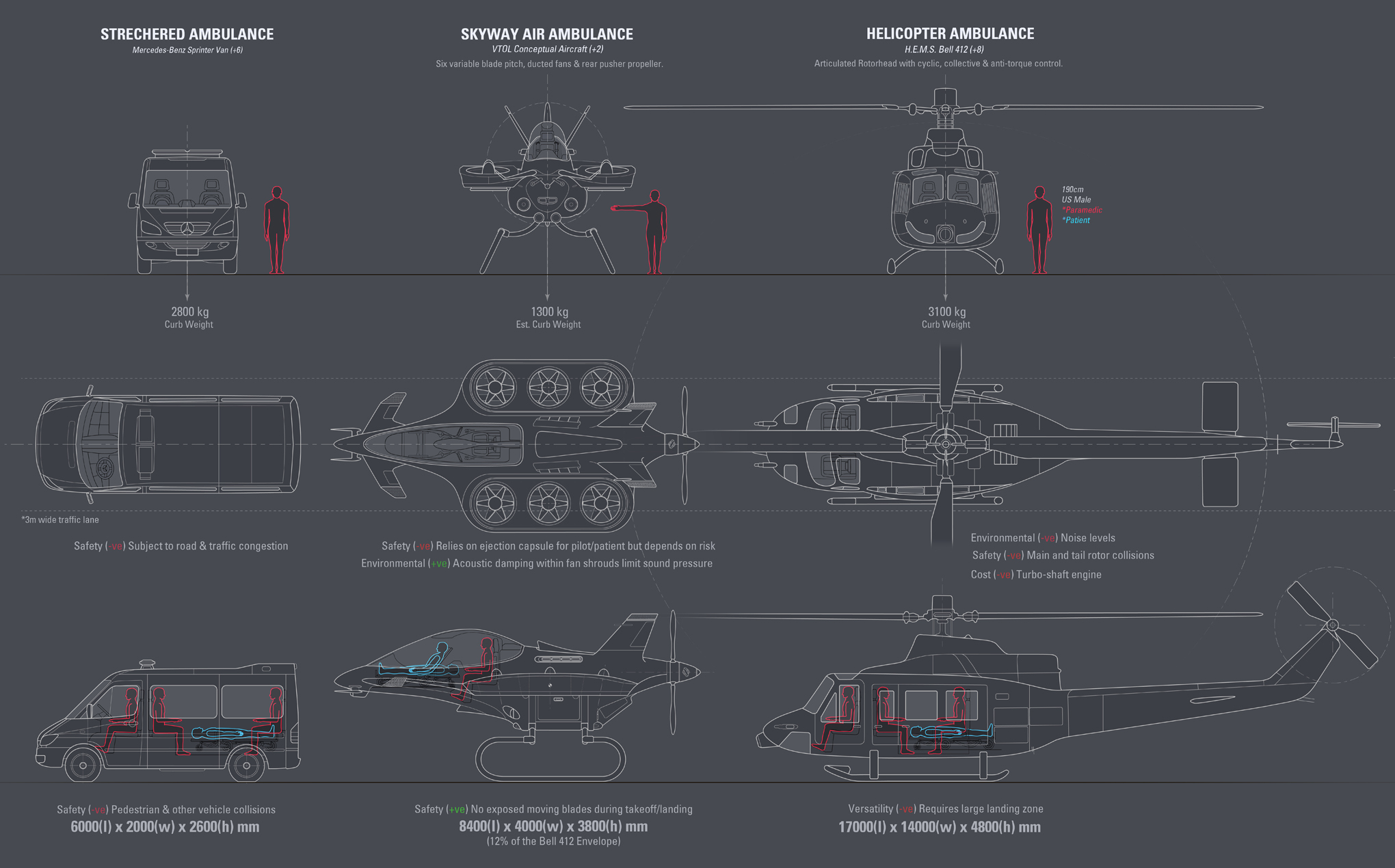Skyway is a first-response, conceptual air ambulance capable of vertical take off & landing. When a patient suffers from a medical injury or condition, Skyway is used to carry its trained pilot/paramedic to the location of a patient. Once onsite, the paramedic can treat, stabilise & stretcher the patient, then transport them to a hospital for further care.
To do this properly & to be adopted by emergency service networks, Skyway must be fast, have a low base manufacturing cost, be versatile, reliable, safe & have high levels of semi-automated pilot control. Currently, fixed wing aircraft & helicopters are restricted to large allocated landing zones & runways. Helicopters are capable of vertical take off and landing, however the risk of rotor collisions prevent them from landing close to obstacles. They also suffer from an inherent speed limit induced by their rotor physics. Aircraft in general are limited in availability due to their cost, complexity & maintenance demands and do not offer the same point of care flexibility a stretchered road ambulance provides. Conversely, road ambulances appear in greater numbers but are often too slow to respond due to road and traffic congestion.
Skyway aims to provide more efficient emergency healthcare services to the community.
Sudden Cardiac Arrest (SCA) is one of the most common emergency call-out incidents. 33,000 people in Australia & 300,000 in the USA die each year because emergency defibrillation was not administered quickly. If SCA defibrillation is delayed for more than 10 minutes, patient survival drops to less than 5%. Many more victims also die from trauma injuries & conditions requiring immediate intensive care treatment. Alarmingly, average medical response times range from 10-20mins in the 50 to 100th percentile of patient cases. High priority cases also suffer from delays as the physical limits of dispatch and transport speeds are approached. This pattern occurs here in Australia & overseas. Availability and management of paramedics & ambulance resources also contribute to response performance.
If a versatile aircraft solution existed which could respond to medical emergencies quickly & consistently, was cost effective, could be implemented as a fleet or to bolster existing networks – a considerable amount of lives could be saved. Skyway & its system of use is designed to respond to any medical emergency within 60 seconds. This would allow 95% of SCA call-out victims to be saved.
All stages of the design journey focused on the needs of patients & paramedics & Ambulance Victoria provided feedback during this process. Emergency response workflows helped define requirements for Skyway & to decide upon the method of propulsion. Trends in fancraft technology & control generated solutions that had many advantages over today’s legacy technologies. During refinement, form, mass distribution & styling were explored using soft & hard models. Flight dynamics were modeled at a general level using computational fluid dynamics and results were feed back into the engineering design process. Skyway is a developed design with a focus on tuning its detail towards patient & paramedic needs, real world physics & medical emergency scenarios.
